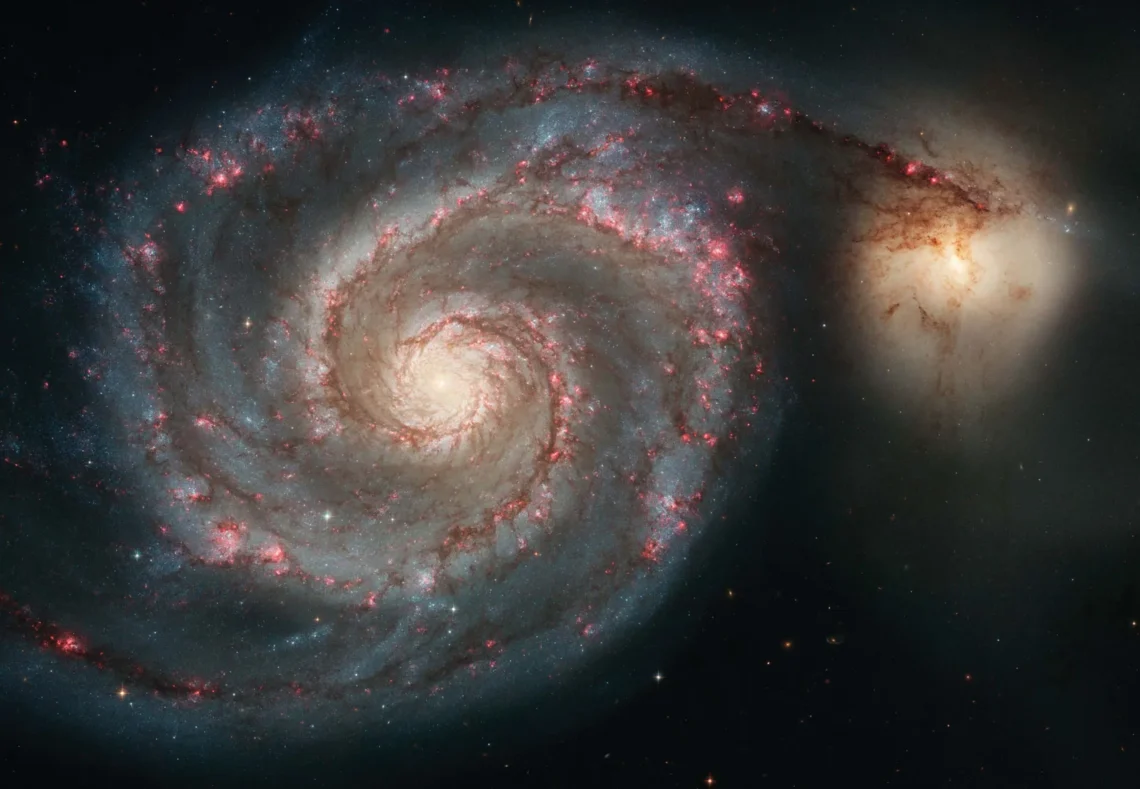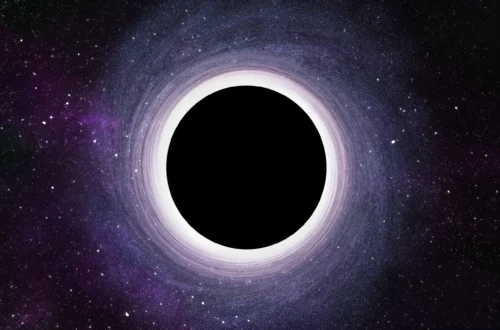The Basic Definition of a Galaxy
At its core, a galaxy is a massive collection of stars, gas, dust, planets, and dark matter, all bound together by gravity. Think of it as a bustling city in space, where billions of stars orbit a common center, much like people buzzing around a downtown hub. These systems can span hundreds of thousands of light-years, making them the building blocks of the universe.
Why the Name “Galaxy”?
The term comes from the Greek word “galaxias,” meaning “milky,” inspired by the hazy band of light we see in the night sky—our Milky Way. Ancient observers thought it looked like spilled milk across the heavens, a poetic nod to its appearance. Over time, we’ve learned it’s not just a streak but a full-fledged structure holding our solar system.
The Role of Gravity in Holding It All Together
Gravity acts like an invisible glue, preventing stars from flying off into the void. Without it, galaxies would scatter like leaves in the wind. This force shapes their rotation and keeps components in a delicate balance, even as they hurl through space at incredible speeds.
Types of Galaxies: A Cosmic Variety Show
Galaxies aren’t one-size-fits-all; they come in shapes that tell stories of their histories. From elegant spirals to blob-like irregulars, each type offers clues about formation and age. It’s like nature’s art gallery, with gravity as the sculptor.
Spiral Galaxies: The Pinwheels of the Sky
Spirals feature a flat disk with curving arms, often wrapped around a bright central bulge. They’re full of young stars and gas, making them hotspots for new life. Our Milky Way is one, and spotting its arms from inside feels like being lost in a forest but admiring the trees.
Elliptical Galaxies: Smooth and Spherical
Ellipticals look like giant footballs, smooth without much gas or dust. They’re older, with stars orbiting randomly, like a swarm of bees. Formed from mergers, they remind me of retired athletes—still massive but past their prime.
Irregular Galaxies: The Wild Cards
Irregulars defy neat categories, appearing lopsided due to collisions or gravity tugs. They’re chaotic but vibrant, bursting with star formation. Picture a abstract painting; that’s an irregular galaxy in space.
Lenticular Galaxies: The In-Betweeners
Lenticulars have a disk like spirals but no arms, bridging ellipticals and spirals. They’re gassy but form few new stars, like a quiet suburb compared to a bustling city.
Here’s a quick comparison table of galaxy types:
| Type | Shape | Star Formation | Example |
|---|---|---|---|
| Spiral | Disk with arms | High | Milky Way |
| Elliptical | Oval or round | Low | M87 |
| Irregular | Lopsided or blob-like | Variable | Magellanic Clouds |
| Lenticular | Lens-shaped disk | Low | NGC 4886 |
- Pros of Spiral Galaxies: Dynamic, full of new stars—perfect for potential life.
- Cons: Prone to disruptions from mergers, like cosmic traffic jams.
- Pros of Elliptical Galaxies: Stable, long-lived stars—less drama.
- Cons: Boring for stargazers; fewer fireworks from new births.
Comparing spirals to ellipticals is like pitting a sports car against a luxury sedan: one thrills with speed, the other with reliability.
Our Home: The Milky Way Galaxy
Living in the Milky Way is like residing in a vast metropolis without realizing its edges. This barred spiral stretches 100,000 light-years across, home to 100-400 billion stars, including our sun. I once camped in a dark-sky reserve, and seeing the Milky Way’s dusty band overhead felt humbling—like peeking at my own address from afar.
Key Facts About the Milky Way
It’s about 13.6 billion years old, with a supermassive black hole, Sagittarius A*, at its heart—4 million times the sun’s mass. The galaxy warps like a vinyl record and vibrates subtly. Fun fact: It cannibalizes smaller galaxies, slowly absorbing them over eons.
The Structure: Arms, Bulge, and Halo
Four main arms spiral out from a central bar: Perseus, Scutum-Centaurus, Sagittarius, and Norma. The bulge teems with old stars, while a halo of dark matter and globular clusters surrounds it all. Imagine a fried egg with swirling patterns—that’s our view edge-on.
Neighboring Galaxies and Future Collisions
We’re part of the Local Group, with Andromeda as our big sibling 2.5 million light-years away. In 4 billion years, they’ll collide, but don’t panic—space is so vast, stars rarely crash. It’ll reshape us into a new elliptical, a cosmic makeover.
Bullet points on Milky Way highlights:
- Contains a black hole that’s mostly chill, not devouring everything.
- Rotates once every 240 million years—our sun’s made 20 laps since forming.
- Dusty and gassy, perfect for stargazing but hazy for photos.
How Galaxies Form and Evolve: From Chaos to Order
Galaxies didn’t pop into existence fully formed; they grew from the Big Bang’s aftermath. Tiny density fluctuations in the early universe clumped under gravity, birthing the first stars. It’s a tale of growth, like a seedling becoming a mighty oak, but on a universal scale.
The Role of Dark Matter in Formation
Dark matter, invisible yet massive, forms halos that cradle baryonic matter. Without it, galaxies couldn’t hold together—rotation speeds would fling stars away. It’s the unseen scaffold, making up 85% of the universe’s mass.
Mergers and Collisions: Shaping Evolution
Mergers are galaxy makeovers: spirals smash to form ellipticals, sparking starbursts. Our Milky Way has merged with dozens, evidence in stellar streams. Think of it as corporate takeovers in space—bigger, but sometimes messier.
The Lifecycle: From Youth to Maturity
Young galaxies are gassy and star-forming; older ones quiesce as gas depletes. Evolution spans billions of years, influenced by black holes regulating growth. Humorously, galaxies “retire” like us, slowing down after a wild youth.
Pros and cons of galaxy mergers:
- Pros: Create new stars, enrich elements for planets.
- Cons: Disrupt structures, potentially quench life-bearing systems.
The Vast Number of Galaxies in the Universe
Estimates peg 100 billion to 2 trillion galaxies in the observable universe, each a potential home to billions of stars. Hubble’s deep fields revealed thousands in a sky patch the size of a grain of sand—mind-blowing! It makes you feel small, yet connected to something grand.
Why So Many? Clustering and the Cosmic Web
Galaxies cluster in groups, superclusters, separated by voids. The cosmic web is like a sponge, with filaments linking dense areas. Our Local Group is tiny compared to the Virgo Supercluster.
Recent Discoveries Boosting the Count
James Webb Telescope data suggests even more faint, distant galaxies. It’s like finding hidden rooms in a mansion—we keep uncovering more.
Table: Galaxy Counts by Scale
| Scale | Number of Galaxies | Example |
|---|---|---|
| Local Group | 50+ | Milky Way, Andromeda |
| Virgo Cluster | Thousands | Nearest major cluster |
| Observable Universe | 2 Trillion | Total estimate |
Observing Galaxies: Tools and Tips for Stargazers
Spotting galaxies isn’t just for pros; with the right tools, anyone can. I started with binoculars on clear nights, hunting Andromeda—it felt like discovering treasure. Dark skies away from cities are key; light pollution is the enemy.
Best Tools for Observing Galaxies
For beginners, a 4-6 inch reflector telescope like the Celestron AstroMaster offers clear views of nearby galaxies. Advanced users love the Orion SkyQuest XT8 for detail on spirals. Apps like SkySafari guide you—transactional tip: Buy from sites like Amazon or OpticsPlanet for deals.
Where to Get Started: Navigational Advice
Join local astronomy clubs or visit observatories like Mauna Kea. Online, NASA’s Hubble site has virtual tours. For hands-on, dark-sky parks like Joshua Tree are prime spots.
Pros and Cons of Amateur Galaxy Observing
- Pros: Affordable, meditative, connects you to the cosmos.
- Cons: Weather-dependent, requires patience—galaxies appear faint, not like Hubble photos.
Comparison: Binoculars vs. Telescopes
- Binoculars: Portable, cheap, great for wide views like the Milky Way.
- Telescopes: Detailed, but bulkier and pricier—ideal for deep-sky objects.
Best books for deeper dives: “Galaxies: Birth and Destiny of Our Universe” by Govert Schilling—engaging read with stunning visuals. Or “Galaxy Formation and Evolution” for science buffs.
External link: Check NASA’s galaxy resources at science.nasa.gov/universe/galaxies for free images and data.
Internal link: If you’re into types, revisit our comparison table above.
People Also Ask: Common Questions About Galaxies
Drawing from real Google queries, here’s what folks wonder:
- What is the difference between a galaxy and the universe? A galaxy is a single system of stars and matter; the universe encompasses all galaxies, space, and time. Like a house vs. the whole city.
- How many galaxies are there? Between 100 billion and 2 trillion in the observable universe, per recent estimates.
- What are the types of galaxies? Mainly spiral, elliptical, irregular, and lenticular—each with unique shapes and stories.
- Is the Milky Way a galaxy? Yes, it’s our home spiral galaxy, one of billions.
- How do galaxies form? From gas clouds collapsing under gravity, aided by dark matter, evolving through mergers.
These address common curiosities, blending info with quick facts.
FAQ: Answering Your Galaxy Queries
What exactly is a galaxy made of?
Stars, gas, dust, planets, and lots of dark matter—held by gravity. Visible stuff is just the tip; dark matter dominates.
How can I observe galaxies from home?
Start with binoculars in a dark area; upgrade to a telescope like the Celestron NexStar for guided views. Apps help locate them.
What’s the biggest galaxy known?
IC 1101, an elliptical behemoth spanning 4 million light-years—dwarfing our Milky Way.
Do all galaxies have black holes?
Most large ones do, with supermassive ones at centers powering activity.
Why study galaxies?
They reveal universe origins, potential life, and our place—plus, it’s endlessly fascinating.





